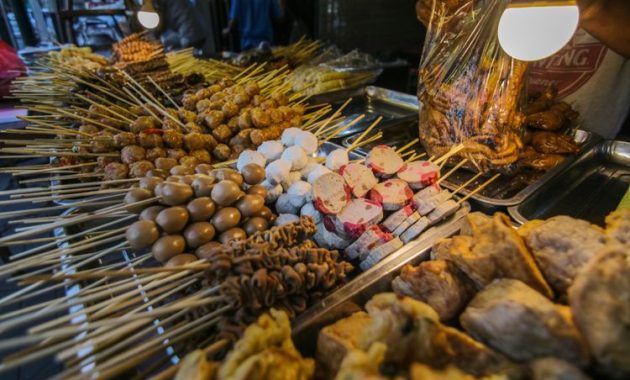
Yogyakarta is not just the cultural heart of Java but also a food lover’s paradise. Known for its vibrant street food scene, the city offers everything from sweet traditional dishes to spicy late-night snacks that locals swear by. For travelers eager to taste Jogja like a true local, exploring street food stalls, angkringan (street-side carts), and night markets is an absolute must. In this Yogyakarta Street Food guide, we’ll take you through the must-try dishes, where to find them, and tips on how to eat like a local.
Why Yogyakarta Street Food is Special
Street food in Yogyakarta reflects its culture—affordable, flavorful, and rooted in tradition. Unlike other big cities, Jogja’s street food retains its authentic Javanese taste with recipes passed down through generations. Eating here isn’t just about food; it’s about gathering with friends, sitting on mats, and soaking up the city’s warm hospitality.
Must-Try Yogyakarta Street Food
1. Gudeg – The Signature Dish of Jogja
Gudeg is a sweet jackfruit stew cooked with coconut milk, palm sugar, and spices. Often served with rice, chicken, egg, and sambal krecek (spicy beef skin stew), it’s a dish you simply cannot leave Yogyakarta without trying.
Where to try: Gudeg Yu Djum (legendary and widely loved).
2. Angkringan Nasi Kucing – Small Rice Portions with Big Flavor
Angkringan carts are an iconic Jogja experience. Their famous “nasi kucing” (literally “cat rice”) comes in small rice portions with side dishes like tempe, fried chicken, or sambal. It’s a budget-friendly, communal eating experience.
Where to try: Angkringan Kopi Joss near Tugu Station, where you can also try Jogja’s famous charcoal coffee.
3. Bakpia Pathok – Sweet Snack Souvenir
This baked pastry filled with mung bean paste, chocolate, or cheese is both a local favorite and a popular souvenir. You’ll find fresh bakpia sold in clusters of small shops across the city.
Where to try: Bakpia Pathok 25 along Pathok Street.
4. Sate Klathak – Grilled Lamb on Skewers
Unique to Jogja, sate klathak uses iron skewers instead of bamboo, grilled simply with salt and served with a savory curry broth. It’s a hearty and flavorful dish for meat lovers.
Where to try: Sate Klathak Pak Pong, near Imogiri.
5. Wedang Ronde – Warm Ginger Dessert
A comforting nighttime snack, wedang ronde is made of warm ginger tea with glutinous rice balls stuffed with peanuts, plus toppings like kolang-kaling (sugar palm fruit). Perfect for Jogja’s cool evenings.
Where to try: Street vendors around Malioboro and Alun-Alun Kidul.
6. Es Dawet – Refreshing Sweet Drink
Made with rice flour jelly, coconut milk, and palm sugar syrup, es dawet is the perfect way to cool down after exploring under the hot Jogja sun.
Where to try: Traditional markets like Pasar Beringharjo.
Best Places to Try Street Food in Yogyakarta
1. Malioboro Street
The city’s most famous street, lined with food stalls selling everything from gudeg to fried snacks. Best explored at night when the atmosphere is buzzing.
2. Alun-Alun Kidul (Southern Square)
Known for its vibrant night scene, this is where locals gather for food, games, and the famous glowing pedal cars. Try lesehan (floor-seating) meals here.
3. Pasar Beringharjo
Not only great for shopping, this traditional market also has rows of stalls serving authentic Javanese food and snacks.
4. Tugu Station Area
Home to some of the best angkringan, this area is a must for budget travelers wanting to eat like a local.
Tips for Enjoying Street Food in Yogyakarta
- Eat like locals: Sit on mats and share food at angkringan stalls.
- Go late: Many stalls open only in the evening and run late into the night.
- Bring small cash: Most stalls don’t accept cards.
- Be adventurous: Try unusual items—you may discover a new favorite dish.
- Stay safe: Choose busy stalls with lots of customers for fresh, safe food.
FAQs about Yogyakarta Street Food
Is Yogyakarta street food safe to eat for tourists?
Yes, as long as you choose stalls that are busy with locals. Fresh turnover means fresh food.
How much does street food in Jogja cost?
Prices range from IDR 5,000 to 20,000 ($0.30–$1.50), making it very budget-friendly.
What time does street food start in Yogyakarta?
Many stalls open in the evening (around 5 PM) and stay open until midnight or later.
What’s the most famous Yogyakarta dish?
Gudeg is the city’s iconic dish and a must-try for every visitor.
Where can I try traditional desserts in Yogyakarta?
Wedang ronde vendors are easy to find at Malioboro and Alun-Alun Kidul in the evenings.
Is Yogyakarta vegetarian-friendly?
Yes, many dishes like tempeh, tahu (tofu), and vegetable nasi kucing are vegetarian-friendly.
Can I find halal street food in Yogyakarta?
Absolutely. Most street food in Jogja is halal-friendly, as the majority of the population is Muslim.
Do angkringan stalls only serve nasi kucing?
No, they also serve fried snacks, skewers, tempeh, drinks, and kopi joss.
What’s the difference between Jogja street food and Jakarta street food?
Jogja’s street food is generally sweeter, reflecting Javanese culinary tradition.
Can I take bakpia as a souvenir back home?
Yes, bakpia is packaged and travel-friendly, making it a perfect edible souvenir.
Is bargaining allowed at food stalls in Yogyakarta?
Not for food, but you can bargain at traditional markets for souvenirs.
Are there food tours in Yogyakarta?
Yes, several local operators offer guided food tours covering angkringan, markets, and dessert stops.
Final Thoughts
Exploring Yogyakarta street food is more than just eating—it’s an adventure into the city’s culture, history, and community spirit. From the iconic gudeg to late-night nasi kucing at angkringan stalls, Jogja’s food scene is an experience that every traveler should embrace. With this guide, you’ll know exactly what to eat, where to go, and how to savor Yogyakarta like a true local.